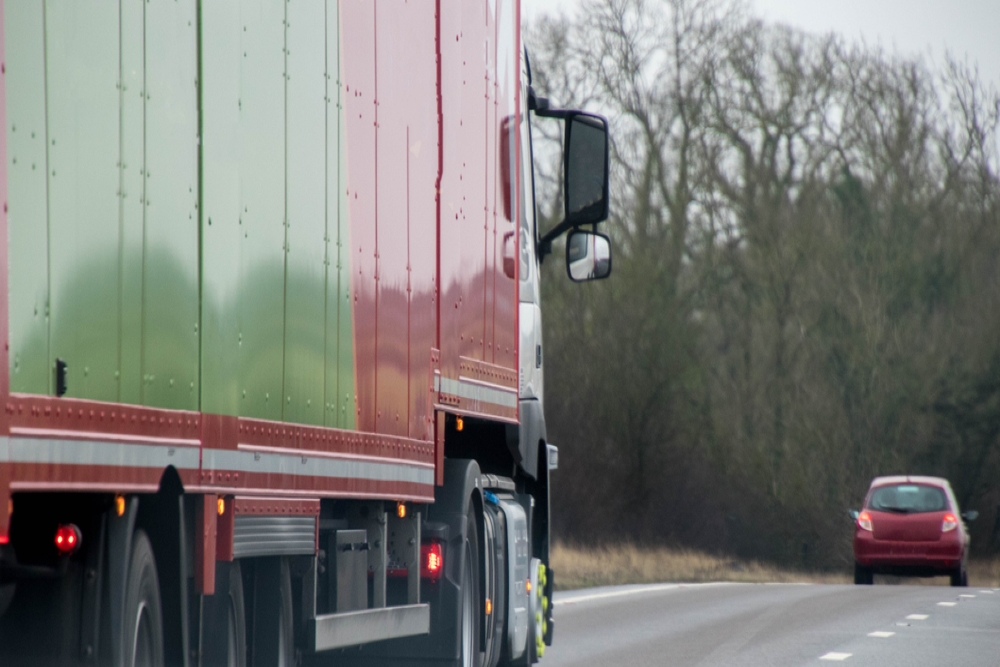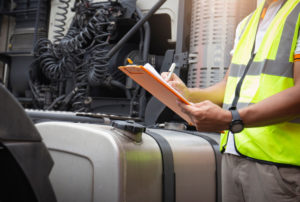Drivers, vehicle operators, and transport and fleet managers are responsible for ensuring that the vehicles they operate are safe and roadworthy. If you’re a fleet operator, check out our guide on fleet operator maintenance responsibilities.
While this is true of all types of vehicles, specific checks must be carried out on lorries and other HGVs daily before the start of each journey.
What is an HGV daily check?
HGV daily checks, also called walkaround checks, must be carried out before each journey to ensure a vehicle is safe to drive.
The walkaround checks the drivers must perform the need to cover the whole vehicle, including the trailer the car is towing. They must also carefully assess the interior and exterior items the driver can safely evaluate.
What do HGV daily checks include?
HGV daily checks typically include inspecting critical vehicle components such as brakes, tyres, lights, oil, fuel levels, and safety equipment to ensure the vehicle is roadworthy and compliant with regulations.
Here’s a list of standard HGV daily checks:
- Brakes – Check for wear and ensure they function correctly.
- Tyres – Inspect tyre pressure, tread depth, and condition for any damage.
- Lights – Ensure all headlights, taillights, indicators, and brake lights work.
- Oil and Fluid Levels – Check engine oil, coolant, brake fluid, and power steering fluid.
- Windscreen Wipers and Washers – Ensure wipers are in good condition and the washers are functioning.
- Mirrors – Check for clear visibility and proper positioning.
- Doors and Locks – Ensure they open, close, and lock properly.
- Horn – Test to ensure it is functioning.
- Battery – Inspect for secure connections and proper charge.
- Suspension – Check for any visible damage or leaks in suspension components.
- Chassis and Frame – Inspect for any visible damage or wear.
- Load Security – Ensure that the load is secured correctly.
- Exhaust System – Check for leaks or damage.
- Fuel Levels – Ensure enough fuel for the journey.
- Emergency Equipment: Verify the availability of safety equipment such as fire extinguishers, first aid kits, and warning triangles.
These checks ensure safety and regulation compliance, helping prevent breakdowns or accidents.
Bridge strikes
The latest walkaround guide issued by the DVSA also highlights an issue that recently received increased publicity: bridge strikes. The guidance now makes it more apparent that drivers should check their vehicle height as part of the check.
According to Network Rail, five bridge strikes daily can cause death or serious injury to road and rail users. The DVSA has said that “not only are bridge strikes dangerous, but they cost the UK taxpayer around £23m a year to repair, as well as landing the owner of the vehicle substantial costs”.
The DVSA has updated their guidance video, highlighting some primary checks that must be completed.
Drivers are legally responsible for the condition of their heavy vehicles, so they must carry out these walkaround checks before each journey. The results of the checks must be recorded, and any safety defects must be reported and fixed before the vehicle is driven.
How long should HGV daily checks take?
Although the HGV daily checks are relatively simple, a comprehensive, thorough vehicle check is essential.
Given this, the exact time it can take will vary. The emphasis should be on carrying out the checks thoroughly and carefully rather than on the time it takes to check your vehicle.
Some sources say the checks should take at least 15 minutes to complete, but they may take longer. It is vital to carry out the necessary checks before starting your journey.
The latest DVSA guidance about walkaround checks
The latest DVSA guidance on walkaround checks outlines the essential steps and requirements for ensuring the safety and roadworthiness of vehicles, helping operators maintain compliance and reduce risks.
Carrying out HGV daily checks
The DVSA has advised that the daily HGV walkaround checks must be completed to maintain roadworthiness.
- Before the vehicle is driven on the road each day
- If more than one driver uses the vehicle in a day, then the driver taking charge of the car should carry out additional checks to ensure the vehicle is safe for them to drive.
The driver must also monitor the condition of their vehicle and report any defects that make themselves apparent. You can do this easily – find out how in our guide to reporting damages on the MyDriveSafe.Expert app.
Keeping a record of HGV daily checks
The driver must record all defects found during daily checks and any that become apparent during a journey. It’s recommended that an agreed-upon form or system be used to record the checks.
Forms should be used to record that all the relevant checks have been carried out daily. If no defects were discovered, the DVSA guidance states that a ‘nil’ reporting method is used, confirming that checks were made, but no defects were found.
If defects are discovered during the checks, the records should include:
- The vehicle registration
- The date
- Details of the defects or symptoms
- Your assessment of the defects (e.g. ‘dangerous’)
- Your name
- Who the defect was reported to
- Rectification work
- Date rectification work was completed
Records should be reported to the responsible person, who can request remedial action. They should also be kept and available for viewing for 15 months.
If any defects are discovered that may affect the vehicle’s safety, it must not be used until it is repaired.
Responsibility for HGV daily checks
The condition and safety of the HGV are ultimately the driver’s legal responsibility. However, transport managers and vehicle operators must ensure their processes include daily HGV checks. They must also ensure that drivers know their legal duties regarding vehicle conditions and the procedures for reporting defects.
See how telematic apps can help with this by reading our telematic app FAQs.
HGV daily check training and paperwork
The DVSA recommends that responsibilities be detailed in writing, that drivers be trained appropriately, and that they sign to confirm that they’ve received a written copy of their duties and understand what is required of them.
The consequences of not carrying out HGV daily checks
The DVSA can stop you and ask you to complete the daily checks on your vehicle or request a copy of the records which show you have completed the necessary daily checks.
If a vehicle is found to have defects during one of these checks, the driver can be prevented from driving until the defect is fixed, or a fine can be issued.
Keep track of HGV daily walkaround checks with the MyDriveSafe app by Fuel Card Services
Every driver and manager must conduct daily checks to ensure the vehicle meets the highest safety standards. The MyDriveSafeExpert app, which is free to download and use, makes this much more manageable. It also includes a manager’s portal, complete reporting, and compliance with all major standards for just £1 per driver per week.
The MyDriveSafe app reduces admin time, records the time to perform checks, creates incident/accident reports, and produces a clear audit trail. Thus, it helps you spot problems earlier, avoid increasing costs, and keep your fleet on the road.




